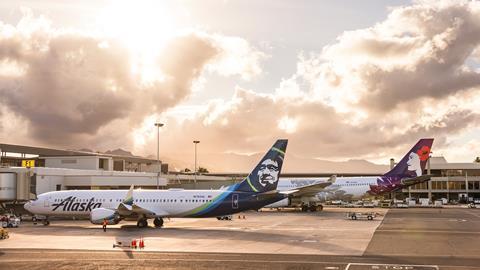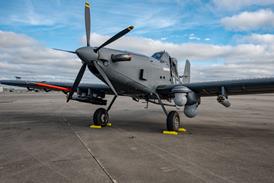Alaska Air Group plans to launch its first flights from the US West Coast to Asia in 2025, part of a broader network shift the carrier says will strengthen its hubs and make it a more formidable nationwide player.
The network changes, revealed by executives on 10 December during an investor conference, are possible thanks to Alaska Air’s September acquisition of Hawaiian Airlines, a deal that brought the company its first widebody jets – Airbus A330s and Boeing 787s.
“This is a new chapter,” says Seattle-based Alaska Air’s chief executive Ben Minicucci. “Acquiring Hawaiian has fast forwarded our plan.”
“What could have taken us decades to build is at our fingertips today,” he adds.

Alaska also on 10 December revealed changes to its frequent-traveller and credit card programmes, all part of a plan it calls “Alaska Accelerate”. The company says the moves will generate an additional $1 billion in revenue in 2027.
Executives say relocating some of Hawaiian’s widebody jets from Honolulu to the US West Coast will be central to its network realignment.
Notably, in May 2025 Hawaiian will begin flying A330s from Seattle to Tokyo Narita International airport, marking Alaska’s first route from the US West Coast to the Far East, it says. Then in October, Hawaiian will launch Seattle-Seoul flights.
“We are not repairing… We are not restructuring,” says Minicucci. “We are building [a] future that is a step-change from the past.”
Alaska Air says aircraft operating the new international flights from Seattle will be taken from the Honolulu-Narita route. But it plans to backfill that lost capacity by adding more flights between Honolulu and Tokyo Haneda airport.
Those changes are just the beginning. “The company plans to serve at least 12 nonstop global destinations with long-haul widebody aircraft from our Seattle gateway by 2030,” Alaska Air says.
The expansion will further pit the company against competitor Delta Air Lines, which has made Seattle one of its primary gateways to Asia. Delta flies from Seattle to Taipei, Seoul, Shanghai and Tokyo.
Alaska Air also plans numerous changes to its domestic network, saying it will “offer an adjusted flight schedule using our combined network to allow for flights from the East Coast and Midwest to connect more easily on the West Coast”.
It will begin operating more overnight flights from Hawaii to the West Coast and plans to expand in San Francisco by launching flights from there, using Alaska Airlines 737s, to Kona and Lihue in Hawaii.
In addition, Alaska Air plans to add 20% more seats between Seattle and Honolulu (achieved partly by replacing narrowbodies with widebody jets) and to add one flight between Portland and Honolulu – for a total of three daily. Also, during the summer, Alaska Air intends to deploy a Hawaiian A330 between Seattle and Anchorage, Alaska.
Alaska Air has always operated a network tailored to customers travelling from and within the western USA. But the network changes will better connect its hubs – particularly Portland and Seattle – to destinations east and west. “Now are hubs are at the centre,” says commercial officer Andrew Harrison.


























